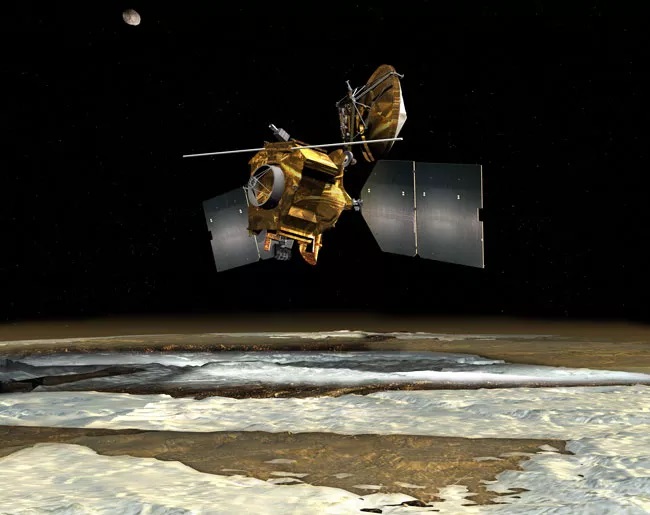The scientists took images from a camera on NASA's Mars Reconnaissance Orbiter (MRO) as the input data for their algorithm .

Mars Reconnaissance Orbiter over the South Pole of Mars. Drawing by the artist. Source: space.com
The MRO Contextual Camera (CTX) captures low-resolution images that can cover hundreds of kilometers at a time. This allows you to find traces of the explosion around the impact site and narrow the search area on the planet's surface. To capture finer details and identify individual craters, scientists are relying on the high-resolution MRO camera HiRISE . It allows you to see objects only 30 cm long from orbit on the planet's surface. First, the images from the CTX camera are analyzed, then HiRISE is aimed at interesting areas. However, meticulous image analysis is required to identify small objects on the surface of Mars and select them for further study. NASA expects AI to accelerate this process.
For a more accurate finding of craters, NASA researchers "trained" the algorithm on 6830 images taken with a context camera. This process included images of areas where humans had previously identified collisions with the planet's surface, as well as areas without craters, so that the instrument could learn to correctly distinguish surface features on Mars.

A cluster of small Martian craters identified by artificial intelligence. Photo: NASA
After training the algorithm, scientists uploaded another 112,000 images of the surface of the Red Planet, captured by a context camera. Thanks to these images, artificial intelligence was able to distinguish a group of craters called Noctis Fossae, which was confirmed by researchers using the HiRISE instrument. Thus, 20 additional areas of interest were identified, which experts will explore in more detail.
“Artificial intelligence, of course, cannot analyze images as skillfully as scientists do. But tools like this new algorithm can help them do just that. This paves the way for an exciting symbiosis of humans and artificial intelligence working together to accelerate scientific discovery, ”said Kiri Wagstaff , JPL NASA.
“It would be impossible to process more than 112,000 images in a reasonable amount of time without distributing the work among many computers,” says her colleague Gary Doran .
NASA hopes to use a similar classification technology on future Mars orbiters. According to the staff of the National Aeronautics and Space Administration, this will provide a more complete picture of how often meteors fall on Mars.